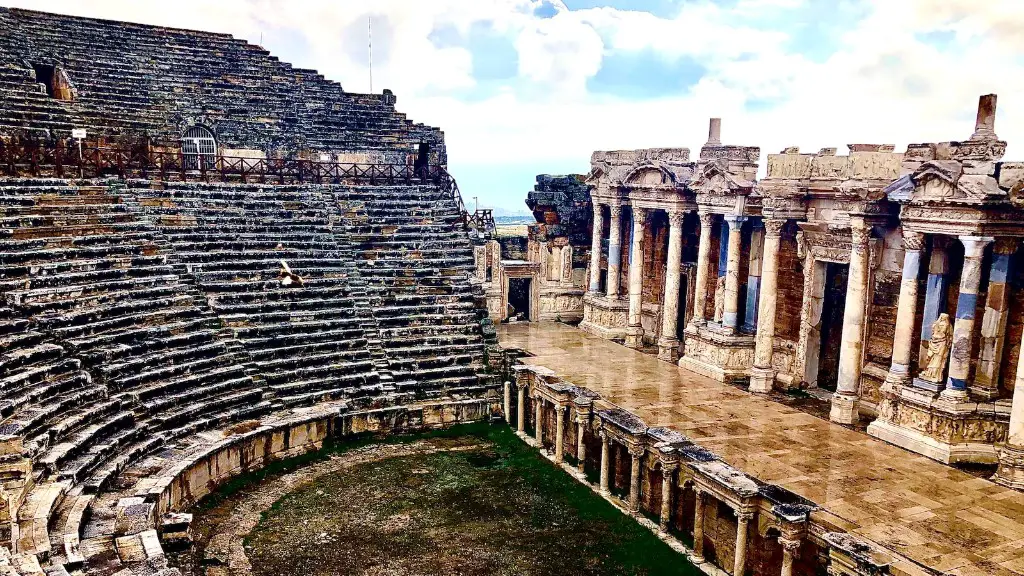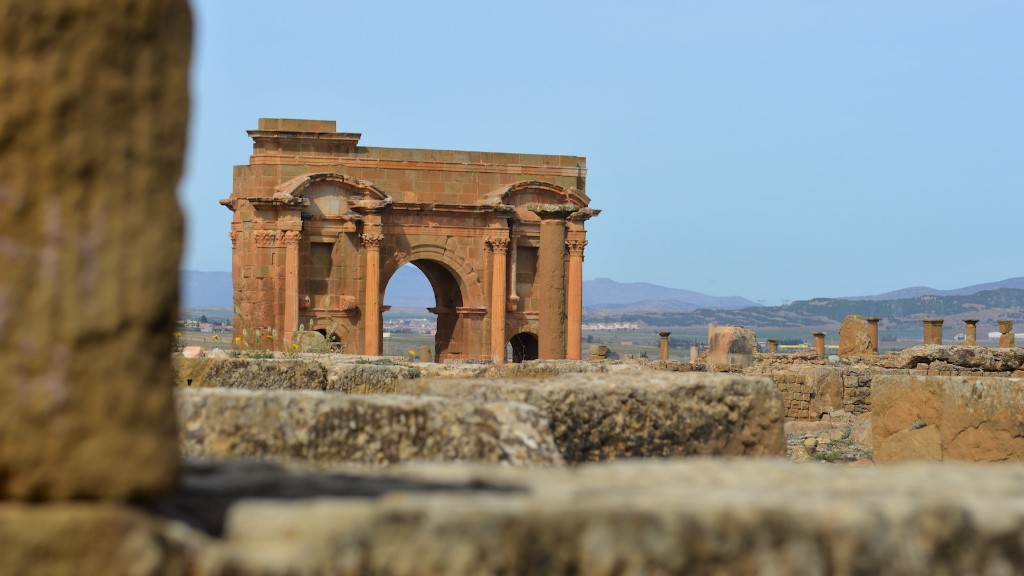Background Information
Ancient Rome was a powerful civilization that dominated Europe, North Africa, and the Near East for more than a thousand years. It was an advanced and powerful society, with laws, literature, art, engineering, and architectural achievements that still stand today. Rome was far ahead of its contemporaries in terms of technology, governance, and ideology. After its fall, Europe underwent a period of stagnation known as the ‘Dark Ages’. This was characterised by political and social upheaval, lack of innovation and an ever-increasing disparity between the rich and the poor. It was due to these factors that Ancient Rome was far more advanced than Medieval Europe.
Technology
In terms of technology, Ancient Rome was very advanced. They had a complex system of roads that allowed for trade, transport and communication to and from the capital. They had a sophisticated irrigation system and a sophisticated sewerage system that still stands in some places today. Their ships were advanced and they even created hydraulic machines, such as tanks and pumps. In contrast, during the Middle Ages, Europe struggled to keep up. There was a lack of funds to invest in scientific and technological advances. What’s more, most of the knowledge and ideas that had been developed in Ancient Rome had been forgotten.
Education
In Ancient Rome, education was a serious matter and was highly valued by the citizens. There were various schools of philosophy and rhetoric, and much of the knowledge acquired at these schools was used in the administration of the daily running of the Roman state. In contrast, during the Middle Ages, education was largely restricted to the clergy and the nobility. Furthermore, the knowledge acquired was mainly related to religious and moral matters.
Architecture and Engineering
For the Ancient Romans, architecture and engineering were of the utmost importance. They were able to construct a massive network of roads, bridges and aqueducts, which still stand today. They also built impressive monuments, amphitheatres and palaces, which are still admired today. In contrast, during the Middle Ages, architecture and engineering were largely restricted to religious buildings, such as cathedrals and monasteries.
Law and Order
Ancient Rome had a complex and well-developed legal system. This system was based on a combination of Roman law and the Twelve Tables of Rome, which laid down the basic laws of the society. In addition, they had the Praetorian Guard, a body of elite soldiers who were responsible for enforcing the law and maintaining order in the city. In contrast, during the Middle Ages, most of the law was based on religious and moral values, as opposed to a complex set of laws. Furthermore, there were no organised policing forces in Europe at the time.
Cultural Achievements
The Ancient Romans had an impressive range of cultural achievements. They were skilled rhetoricians and their literature was highly influential. They produced many great works of art and architecture, such as the Colosseum and the Pantheon. Furthermore, most of the principles of modern democracy can be traced back to the philosophy of the Ancient Romans. In contrast, during the Middle Ages, many works of art and literature were largely religious in nature and the overall culture of the time was less advanced than it was in Ancient Rome.
Political System
The Ancient Romans had a highly sophisticated political system. This system was based on a combination of plebiscites and elections, which ensured that the citizens had a say in the running of the state. Furthermore, the system was supplemented by a Senate and a complex bureaucracy which made sure that the state was efficiently and effectively managed. In contrast, during the Middle Ages, Europe was divided into various small states and kingdoms, which were often at odds with one another. Furthermore, there was no representation for the citizens in the government and decisions were largely made by the ruling elite.
Economy
Ancient Rome had a strong and vibrant economy and was able to maintain stability and security. This enabled them to focus more on innovation and the development of technology. In contrast, during the Middle Ages, Europe was struggling to keep up with its neighbours and was facing economic decline and stagnation. This stagnation was mainly due to the lack of resources and the disruption caused by wars, plague and other disasters.
Military
The Ancient Roman army was one of the most powerful and advanced forces in the world. They had an efficient system of organisation and discipline, which allowed them to quickly mobilise their forces and respond to any threats. Furthermore, they had highly advanced weaponry and tactics that enabled them to achieve victory in most battles. In contrast, during the Middle Ages, Europe’s military was largely composed of unorganised militia and was ill-equipped for most battles.
Social Structure
In Ancient Rome, the social structure was very complex and stratified. There was a clear division between the upper, middle and lower classes, which had different rights and responsibilities. This structure lent stability to the state and allowed their citizens to pursue their dreams and contribute to the society. In contrast, during the Middle Ages, most of Europe’s population was defined as lower-class and was largely restricted to manual labour and agriculture. Furthermore, they had few rights and any mobility was severely constrained.
Religion and Ideology
In Ancient Rome, religion and ideology were intertwined with the state and its citizens were expected to pay homage to the gods and abide by the laws of the state. Furthermore, the Ancient Romans were able to integrate different religious and cultural practices from all the regions they conquered and were very tolerant of different beliefs. In contrast, during the Middle Ages, Europe was largely divided between different religious denominations, which led to many wars and conflict between them. Furthermore, the religious authorities had a great deal of power in Europe and people had to follow their laws, even if it went against their beliefs.


